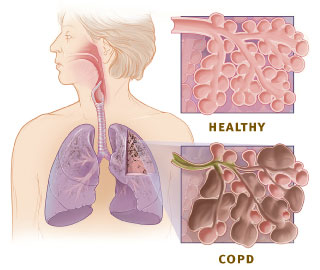Candidates for tamoxifen therapy suffering from breast cancer may benefit from a blood test for CYP2D6 to know whether the therapy will be very effective in them.
For nearly a decade, breast cancer researchers studying the hormone therapy tamoxifen have been divided as to whether genetic differences in a liver enzyme affect the drug's effectiveness and the likelihood breast cancer recurrence.
Researchers from the Mayo Clinic Cancer Center and the Austrian Breast and Colorectal Cancer Study Group provide evidence that genetic differences in the enzyme CYP2D6 may play a key role to determine which patient is going to get best out of the therapy.
Tamoxifen is usually prescribed to the patients positive for Estrogen Receptor (ER +ve) as a hormonal manipulation therapy. Tamoxifen itself is a pro-drug, having relatively little affinity for its target protein, the estrogen receptor.
It is metabolised in the liver by the enzyme cytochrome P450 isoform CYP2D6 and CYP3A4 into active metabolites such as 4-hydroxytamoxifen (afimoxifene) and N-desmethyl-4-hydroxytamoxifen (endoxifen).
These metabolites, especially the endoxifen has a greater affinity for the ER protein and competitively blocks the binding of the hormone estrogen that facilitates the tumour growth.
Tamoxifen causes cells to remain in the G0 and G1 phases of the cell cycle. Because it prevents (pre)cancerous cells from dividing but does not cause cell death, that is why it is cytostatic rather than cytocidal.
Multiple investigations have identified genetic variants of CYP2D6 that can affect its activity, which in turn affects the metabolism of tamoxifen. Where, there is no effective conversion of the pro-drug to its active form that may lead to a worse clinical outcome.
Geno typing, therefore has the potential for identification of women who have these CYP2D6 phenotypes and for whom the use of tamoxifen is associated with poor outcomes.
Recent studies suggest that taking the selective serotonin re-uptake inhibitors (SSRIs) antidepressants; paroxetine (Paxil), fluoxetine (Prozac), and sertraline (Zoloft), can decrease the effectiveness of tamoxifen, as these drugs compete for the CYP2D6 enzyme which is needed to metabolize tamoxifen into the active form; endoxifen.
Researchers are now working with the National Cancer Institute to develop endoxifen as an alternative to tamoxifen. If women can be given endoxifen, the active part of tamoxifen, it won't matter how tamoxifen gets metabolized.
For nearly a decade, breast cancer researchers studying the hormone therapy tamoxifen have been divided as to whether genetic differences in a liver enzyme affect the drug's effectiveness and the likelihood breast cancer recurrence.
Researchers from the Mayo Clinic Cancer Center and the Austrian Breast and Colorectal Cancer Study Group provide evidence that genetic differences in the enzyme CYP2D6 may play a key role to determine which patient is going to get best out of the therapy.
| Crystallography of 4-hydroxytamoxifen (carbon = white, oxygen = red, nitrogen = blue) complexed with ligand binding domain of estrogen receptor alpha (cyan ribbon). PDB 3ERT; Shiau AK, Barstad D, Loria PM, Cheng L, Kushner PJ, Agard DA, Greene GL (December 1998). "The structural basis of estrogen receptor/coactivator recognition and the antagonism of this interaction by tamoxifen". Cell 95 (7) : 927–37. doi:10.1016/S0092-8674(00)81717-1. PMID 9875847. (Photo credit: Wikipedia) |
Tamoxifen is usually prescribed to the patients positive for Estrogen Receptor (ER +ve) as a hormonal manipulation therapy. Tamoxifen itself is a pro-drug, having relatively little affinity for its target protein, the estrogen receptor.
It is metabolised in the liver by the enzyme cytochrome P450 isoform CYP2D6 and CYP3A4 into active metabolites such as 4-hydroxytamoxifen (afimoxifene) and N-desmethyl-4-hydroxytamoxifen (endoxifen).
These metabolites, especially the endoxifen has a greater affinity for the ER protein and competitively blocks the binding of the hormone estrogen that facilitates the tumour growth.
Tamoxifen causes cells to remain in the G0 and G1 phases of the cell cycle. Because it prevents (pre)cancerous cells from dividing but does not cause cell death, that is why it is cytostatic rather than cytocidal.
Multiple investigations have identified genetic variants of CYP2D6 that can affect its activity, which in turn affects the metabolism of tamoxifen. Where, there is no effective conversion of the pro-drug to its active form that may lead to a worse clinical outcome.
Geno typing, therefore has the potential for identification of women who have these CYP2D6 phenotypes and for whom the use of tamoxifen is associated with poor outcomes.
Recent studies suggest that taking the selective serotonin re-uptake inhibitors (SSRIs) antidepressants; paroxetine (Paxil), fluoxetine (Prozac), and sertraline (Zoloft), can decrease the effectiveness of tamoxifen, as these drugs compete for the CYP2D6 enzyme which is needed to metabolize tamoxifen into the active form; endoxifen.
Researchers are now working with the National Cancer Institute to develop endoxifen as an alternative to tamoxifen. If women can be given endoxifen, the active part of tamoxifen, it won't matter how tamoxifen gets metabolized.
...
Click here to Subscribe news feed from "Clinicianonnet; so that you do not miss out anything that can be valuable to you !!
...






